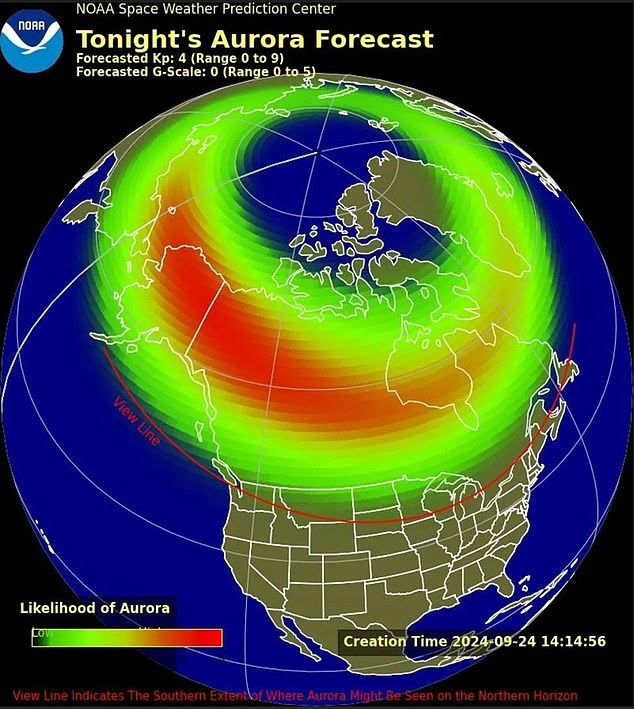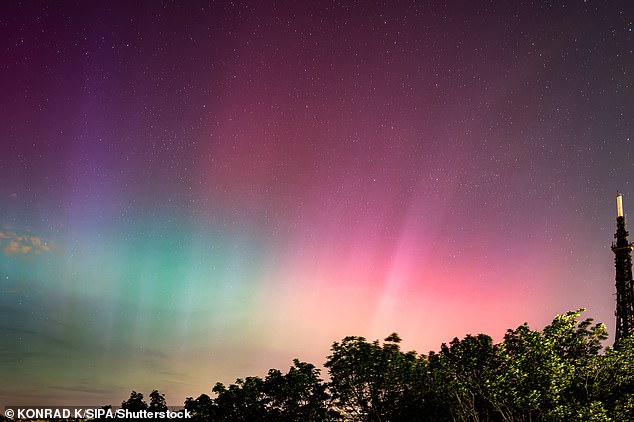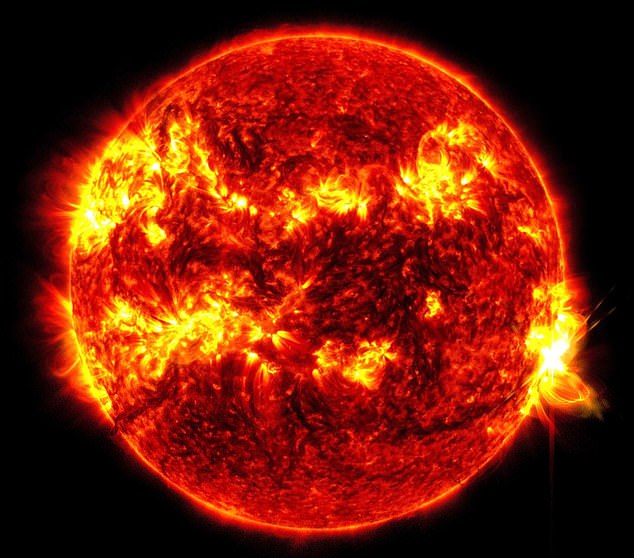A geomagnetic storm is expected to hit Earth tomorrow after the Sun launched a plume of plasma and high-energy particles toward our planet.
The incoming coronal mass ejection (CME) was unleashed Sunday at 5:40 p.m. ET when a massive sunspot spontaneously erupted.
The jet of solar plasma is currently shooting towards our planet at more than 650,000 miles per hour and is expected to reach Earth at midday Eastern Time on Wednesday (5pm UK time; 2am US Eastern Time).
Earth could experience a small geomagnetic storm at noon on Wednesday
But the CME will only graze the planet’s magnetosphere, or the region of space around a planet dominated by its magnetic field.
Normally, this mild jolt wouldn’t trigger a geomagnetic storm, but since it’s coming so close to the autumn equinox (which occurred on Sunday), NOAA has forecast a minor G1 storm for tomorrow.
NOAA’s Space Weather Prediction Center classifies geomagnetic storms on a scale from G1 to G5, with G1 being “minor” and G5 being “extreme.”
A G5 storm can significantly disrupt infrastructure, causing power and communications outages across wide areas.
We won’t have to worry about that with this upcoming G1 storm, though. This type of storm only has a slight risk of affecting infrastructure at high latitudes, including cell towers and satellites.
But it could trigger dazzling auroras along the horizons of states along the northern U.S. border and in the upper Midwest, according to NOAA.

Storm G1 could bring a dazzling aurora to northern states on Tuesday and Wednesday night

The auroras are typically most active between 10 p.m. and 2 a.m., and you’ll need to get as far away from light pollution as possible to get a clear view.
The fact that this storm occurs just a few days after the autumn equinox is no coincidence.
During the weeks before and after Earth’s two equinoxes, geomagnetic storms are most common.
This is because during the equinoxes, the Sun is positioned directly above the Earth’s equator and our planet’s magnetosphere aligns with the Sun’s magnetic field.
For the rest of the year, they are misaligned, meaning CMEs are partially deflected by the magnetosphere and we don’t experience their full impact.
But if a CME occurs while Earth is experiencing an equinox, it collides more directly with the planet’s magnetosphere and causes geomagnetic activity, even if the CME is weak or an indirect impact.
In contrast, geomagnetic storms are much less likely around the time of the solstices, when the Earth’s vertical tilt toward or away from the sun is greatest.
Geomagnetic storms are about twice as likely around the equinoxes as around the solstices.
Residents in northern states should keep an eye out for auroras on Tuesday and Wednesday nights. They are typically most active between 10 p.m. and 2 a.m., and it’s best to get as far away from light pollution as possible to see them clearly.


